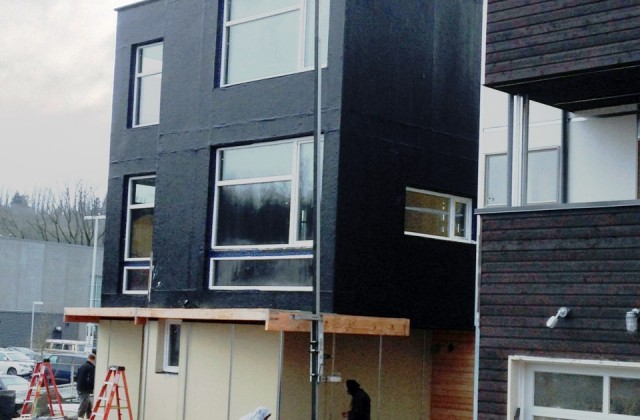Work in Progress: First Look at Small Lot Recommendations
Last week the City Council’s Planning, Land Use, and Sustainability (PLUS) Committee met and heard recommendations about finalizing small-lot legislation. The memo issued by the Department of Planning and Development included important elements of our initiative to support the 80 percent rule, allowing development on lots slightly smaller than the average lot on a block.
It is still early in the process. Your input has helped. We hope you’ll continue to send e-mails encouraging the Council to support more housing options as Seattle grows. Here is the initial response we sent to the PLUS committee yesterday. Let us know your thoughts and let the Council know your thoughts as well.
1. Set a uniform absolute minimum lot area of 2,000 square feet, to apply to lots qualifying under all lot area exceptions.
We expect a minimum lot size in the proposed legislation and think 2000 square feet is reasonable. We’d also appreciate a discussion of the importance of the legal standing of a property in determining whether it should be developed. Limitations on development based only on lot size will limit some important opportunities to build energy efficient, affordable, and neighborhood scale housing.
We also believe two-house/one lot short plats show historical intent and should be allowed because they don’t change the current uses of the property. As such, we would not support the removal of exemptions for these from the proposed legislation.
2. Limit structure height permitted outright on lots under 3,200 square feet in area to 18 feet, plus a five-foot pitched roof.
We suggest that you keep the interim standard of 22 feet rather than 18 since the code determines height based on the existing grade at the midpoint of each side of the building to the top plate for pitched roofs, or the top of roof structure for flat roofs.
As a practical matter, an 18-foot height limit for a flat roof home makes it difficult to get two full floors without depressing the home into the ground.
A compromise would be 22 feet without the 5-foot additional for pitched roofs and/or 18 feet with the extra 5 feet to ridge as has been proposed on pitched roofs. Without this compromise, an 18-foot height limit would limit many lots to 1-story, which doesn’t appear to be Council’s or DPD’s intent.
3. Allow additional height on lots under 3,200 square feet in area as a special exception, a Type II decision.
This recommendation is fine, provided that the height limit remain at 22 feet, as it is in the interim standard.
4. Limit the ability for multiple, abutting undersized lots to qualify for separate development under the exception provided for lots established by pre-1957 records.
If we understand this correctly, ownership of two adjacent undersized lots would require consolidation of those lots. If that’s the case, we think this provision would be unfair to property owners who have two small pre-existing lots. That owner would end up with one large lot, something inconsistent with the stated intention of the DPD recommendations to encourage building smaller infill homes.
5. Continue the limitation established under the interim ordinance, not allowing undersized lots to qualify for a lot area exception based on historic tax records, and also disallow qualification based on mortgage records.
Provided that the Council adopts the 80 percent rule proposal, we will support recommendation to disallow development on lots excepted based on historic tax records. However, many of our members still feel strongly that for many years exemptions to lot size have been based on legal intent “by deed, contract of sale, mortgage, property tax segregation, platting, or building permit.”
Smart Growth Seattle will not support a limitation on mortgage records since it represents the clear legal intent of a property owner to preserve development potential on part of their property.
The proposed legislation to end exemptions based on historic tax records will reduce housing supply by about 18 to 24 homes per year. We believe that loss can be mitigated by adoption of the new 80 percent rule and result in more predictable neighborhood scale development.
6. Alternative to the 75/80 Rule
The 2000-foot minimum is acceptable as mentioned above. Application of the Type II decision requirement should apply but only when height exceeds 22 feet.
It is unclear what is intended by preventing the demolition of existing houses. We don’t believe that the Council would intend to eliminate demolition of a home if a property owner desired to rebuild, so it isn’t clear how this prohibition would be implemented.
Limiting the application of the rule to urban centers or transit areas seems counterproductive since most single-family neighborhoods where these rules would apply are substantially outside these areas.
7. A number of other minor amendments
We do not support the limitation of structure depth based on the width of lot frontage under 3200 square feet. The case for our opposition to this is made even stronger with 18-foot height limits since, if we lower height to 18 feet, development on a 25 x 100 foot lot (standard original Seattle platting size lot) would result in an 18 foot high, 1500 square foot house with garage. Excluding the garage, a home would end up with less than 1300 square feet of living space. We should allow existing requirements in the land use code to determine setback requirements, which will result in more housing choice.


